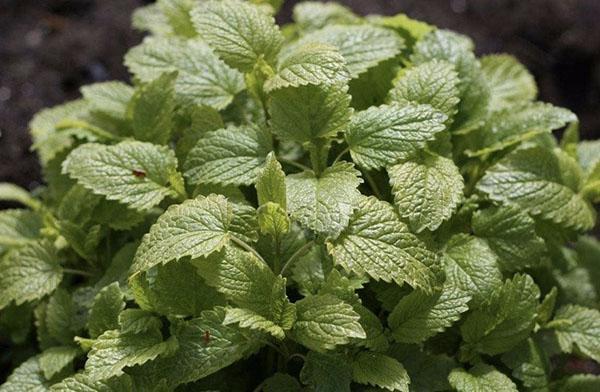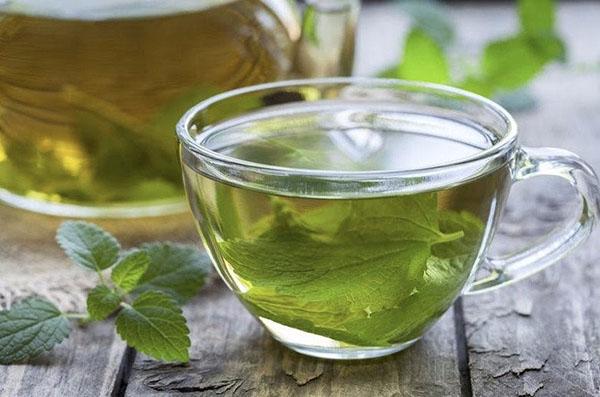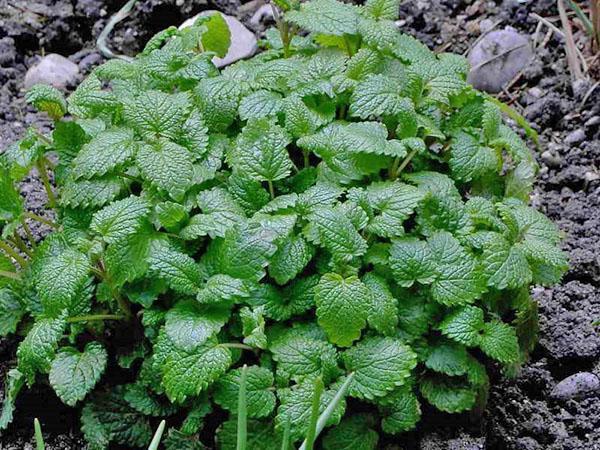Growing lemon balm in a summer cottage: planting rules, gentle care
 A modest plant, exuding a pleasant lemon scent, has long attracted the attention of true fans of greenery. Therefore, the cultivation of lemon balm in the backyard is an interesting activity for gardeners. After all, this plant is famous not only for its heady smell. It miraculously decorates the backyard in the country, is used as a remedy and seasoning for some dishes.
A modest plant, exuding a pleasant lemon scent, has long attracted the attention of true fans of greenery. Therefore, the cultivation of lemon balm in the backyard is an interesting activity for gardeners. After all, this plant is famous not only for its heady smell. It miraculously decorates the backyard in the country, is used as a remedy and seasoning for some dishes. 
Lemon balm teas and decoctions have a beneficial effect on the digestive system; help to cope with migraines and insomnia; lower blood pressure; calm the nerves.
Meet the green queen of the front garden
 Melissa is a herbaceous perennial that belongs to the Lamb family. In its natural environment, it is found almost throughout Eurasia, as well as in the northern part of the American continent. It grows:
Melissa is a herbaceous perennial that belongs to the Lamb family. In its natural environment, it is found almost throughout Eurasia, as well as in the northern part of the American continent. It grows:
- among the bushes;
- along the banks of rivers;
- on forest edges;
- on rocky slopes;
- along the steppe roads.
Its homeland is the Mediterranean, where it is considered an unsightly weed. Despite this, in ancient Rome, experienced gardeners everywhere were engaged in the cultivation of lemon balm in their personal plots. This is what contributed to its spread throughout the continent. The name of the perennial is associated with many legends. In accordance with the most popular version, melissa is the name of the girl who was turned into an insect by the evil Greek gods. And translated into Russian, the name means "honey bee". Whichever version is correct, this does not prevent fans of green spaces from growing lemon balm in their summer cottage.
Looking at the plant from the side, one can note its excellent features:
- branched root system;
- many lush shoots with a rectangular section, directed in different directions;
- plant height reaches over 1 meter;
- intoxicating citrus scent.
 If you look closely at the leaf plates, unusual fleshy specimens are revealed. They are covered with many thin veins located against the background of the relief surface. The edges of the ovate opposite leaves are decorated with serrations. The tips are slightly elongated, which gives them an unprecedented beauty. All of them are colored bright green and covered with barely visible villi.
If you look closely at the leaf plates, unusual fleshy specimens are revealed. They are covered with many thin veins located against the background of the relief surface. The edges of the ovate opposite leaves are decorated with serrations. The tips are slightly elongated, which gives them an unprecedented beauty. All of them are colored bright green and covered with barely visible villi.
 In the second year after planting, in the middle of summer, buds of an umbrella character appear on the tips of slender stems. Being in the leaf axils, snow-white or blue inflorescences look original against the background of a lush bush. Due to the elongated lower petals, the buds have an asymmetric shape, in the center of which there is a pistil surrounded by 4 stamens.
In the second year after planting, in the middle of summer, buds of an umbrella character appear on the tips of slender stems. Being in the leaf axils, snow-white or blue inflorescences look original against the background of a lush bush. Due to the elongated lower petals, the buds have an asymmetric shape, in the center of which there is a pistil surrounded by 4 stamens.  About 30 days after pollination, fruits appear in the form of egg-shaped nuts. They are covered with a dense, shiny black crust. Inside the fruit there are 4 seeds that remain viable for about 3 years.
About 30 days after pollination, fruits appear in the form of egg-shaped nuts. They are covered with a dense, shiny black crust. Inside the fruit there are 4 seeds that remain viable for about 3 years.
When buying seed, you should take into account the fact that 60 g contains more than 1500 seeds.
Growing lemon balm at their summer cottage: the main points of planting

To achieve success in your business, it is important to focus on the following points:
- plant attitude to lighting;
- type of soil;
- perennial planting technology on the site.
 Based on this, first we will figure out where to plant lemon balm in the personal plot so that it will successfully take root. It has been observed that the plant loves open areas where there is a lot of sunlight. It is grown in front gardens, on the outskirts of vegetable gardens, orchards and among low shrubs.
Based on this, first we will figure out where to plant lemon balm in the personal plot so that it will successfully take root. It has been observed that the plant loves open areas where there is a lot of sunlight. It is grown in front gardens, on the outskirts of vegetable gardens, orchards and among low shrubs.  Although lemon balm is not afraid of the cold, it is still better to plant it on the south side of the territory.
Although lemon balm is not afraid of the cold, it is still better to plant it on the south side of the territory.
The plant feels comfortable in places where there is a protective structure from cold gusty winds. This could be a building, fence, or other plants.
Perennial prefers fertile land with the presence drainage... The best option is to plant lemon balm in loamy soil. She wonderfully permeates water and air, which is vital for her development. If heavy soil prevails in the summer cottage, it is diluted with river sand and fertilized with humus or mineral additives. It is best to do this in the fall, so that aromatic grass appears in the yard next season.
Since the plant is considered versatile, the sowing time of lemon balm depends on the climatic conditions of the area where it will grow. Therefore, gardeners suggest the following periods:
- from early March to May;
- June - mid-August;
- end of October (before the onset of frost, so that seedlings do not appear).
 As you know, the seeds of a plant are very small. This directly affects how you plant lemon balm for the best possible results. There are several basic rules:
As you know, the seeds of a plant are very small. This directly affects how you plant lemon balm for the best possible results. There are several basic rules:
- sowing is carried out in warm soil;
- the depth of the holes does not exceed 1.5 cm;
- sparse planting of seeds.
In the prepared area, grooves are made, slightly moistened, planting material is placed and sprinkled with earth. Such a simple technology allows you to grow a fragrant perennial in your summer cottage. Since the sprouts will appear only after a month, novice gardeners may wonder why lemon balm does not emerge for so long. In fact, you just need a little patience to wait for the first shoots.
In order for the perennial to take root well on the site, the sprouts should be thinned out. The distance between them should be approximately 40 cm.
Anxious care of the plant: expert advice
 Some people think: if a perennial is unpretentious, then it does not need special attention. However, only the application of tips on how to care for lemon balm opens the way to magnificent landscaping of the site.
Some people think: if a perennial is unpretentious, then it does not need special attention. However, only the application of tips on how to care for lemon balm opens the way to magnificent landscaping of the site.
Thorough weeding of the soil
In order for young seedlings to develop quickly, gardeners carefully monitor the appearance of weeds. Usually they are pulled out by hand. After that, the soil is carefully weeded, providing the plant's root system with a fresh portion of oxygen. When it hardens, the procedure is performed several times a season.
Basic principles of watering
The rules for planting lemon balm and care in the open field are not complete without competent moisture. At the initial stage, the seedlings are watered in small portions so that they gain strength and take root. Adult lemon balm needs water only during the heat of summer. Each procedure is accompanied by weeding of the topsoil. Some gardeners advise spreading around the plant mulch... As a result, moisture will remain and there will be no weeds. To do this, use compost or humus, which will simultaneously fertilize the soil.
Competent pruning
 Since lemon balm is a branchy bush, it is not afraid of the planned removal of branches. On the contrary, after such a procedure, many young shoots appear, which turn the plant into a lush green ball.
Since lemon balm is a branchy bush, it is not afraid of the planned removal of branches. On the contrary, after such a procedure, many young shoots appear, which turn the plant into a lush green ball.
Novice gardeners should readily apply the advice of experts on growing and caring for lemon balm. As a result, it will be able to delight its owners for about 10 years. Its fragrant foliage is an excellent remedy for the treatment of disease and health promotion.